-
Posts
1,751 -
Joined
-
Last visited
-
Days Won
3
Content Type
Profiles
Forums
Blogs
Gallery
Events
Store
Posts posted by Dieter3
-
-
-
And then these I think were there as just random examples of Russo-Japan War era medals. Pretty faded, unfortunately:
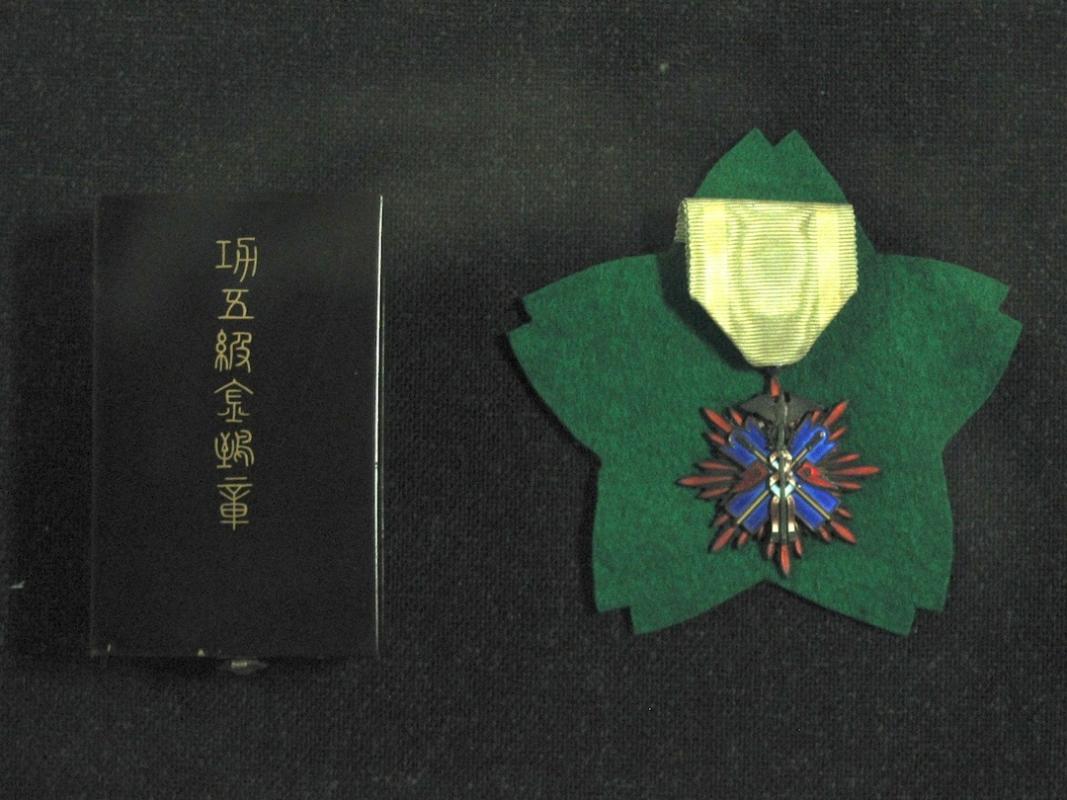 0
0 -
-
-
-
These following photos are all from Mikasa, October 2010. But are these Togo's awards? I was led to believe that the first photo actually named the recipient of these awards, but maybe not:
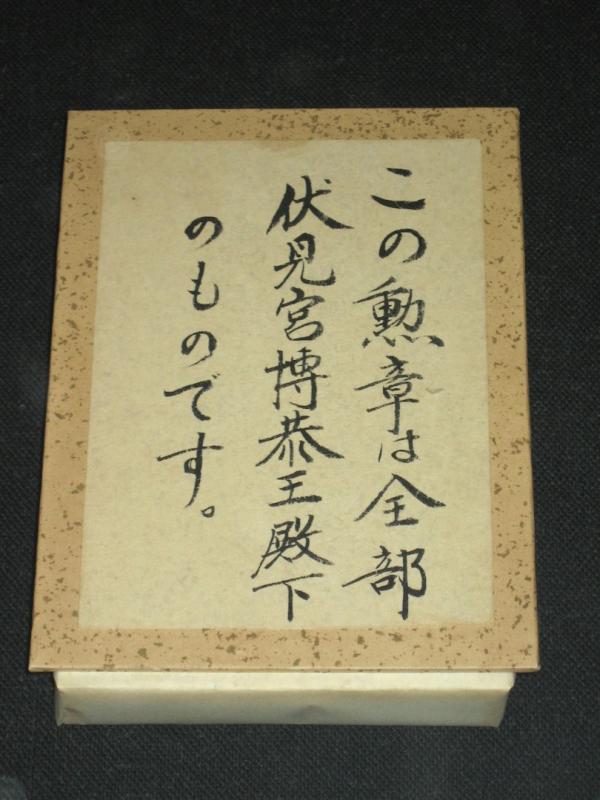 0
0 -
I have not visited any branches of the mint, unfortunately.
 That's on my list for my next visit! :D0
That's on my list for my next visit! :D0 -
Yeah, that's the same person that denied me any information as well.
"Your understanding is appreciated" - Thanks Mint Bureau, but you've done nothing to contribute to understanding anything other than understanding that you are not interested in helping us! What, is this some kind of "TOP SECRET"? Sheesh. Well, I'm going to dig deeper. Could take a while and likely be a dead end, but worth trying.
Rich, have you at all tried to contact the cabinet Office? Still no response to my query.
0 -
Very nice! Definitely don't see those like you do the "5th" and "6th" classes!
0 -
Most likely!
0 -
I wonder if it will turn out to be a disaterous bidding war? Did you notice where the seller was from in the Y!JA auction? Same selling location, or is this seller picking up cheap replicas and then passing them off as originals?
0 -
Who could blame you for blaming the enamels? They're great! Love the yellow! :)
0 -
I very much doubt this is the original case! I'd assume originals, if they existed, would be fashioned like all of the other Showa-era medals war and commemorative medals. I've seen a few of these medals in cases, as I'm sure we al have, but I have yet to see two that are the same! I think you are right - for an unoffical medal, or more likely a generic box really with a fabricated interior.
0 -
Love it, with proper fitted case with seal! NICE! :jumping:
0 -
I have just written to the Mint in both English and Japanese concerning this matter. If we are lucky, a definitive answer will arrive someday.
AMEN! ;)
0 -
Interesting, current Y!JA Auction, "cased" specimen:
http://gmic.co.uk/uploads/monthly_11_2012/post-6375-0-68631300-1353163075.jpghttp://gmic.co.uk/uploads/monthly_11_2012/post-6375-0-22114300-1353163084.jpghttp://gmic.co.uk/uploads/monthly_11_2012/post-6375-0-74305600-1353163089.jpg
0 -
Type 1, Type 2, first generation, second generation, Taishô piece, Shôwa piece - why is life so complicated?


'Tis one of the things that makes collecting so fun, but yes, also frustrating!
0 -
If these are chronologocal marks, than how (by what principle) do you think they organized?!
You see we have both types of marks, i.e. two-letter marks and letter-number marks.
Usually, when the mark is a time mark, only letter-number codes are used

Here comes an example from Finland phaleristic (see the last post)
http://gmic.co.uk/in...the-white-rose/
Well, I'm still trying to figure this out. But we do see the letter/number combos used for sure after 2003. I don't know that we can necessarily align marks strictly to the gregorian calendar or if we must take into account the Japanese calendar, in which each epoch shares a last and first year (EX: last year of Showa, 1st year of Heisei = 1989 - does this matter in a chronological scheme?
These might also represent simple sequences. EX: A0 might represent the first 1,000 medals of a certain type. A1 - the next thousand, etc. Maybe reach 10,000 and change to B0. I'm thinking along the lines of weapons. Although they had serial#s, the numbers would eventually recycle but carry a new character to represent a series. Perhaps a similar scheme?
No doubt, they MUST represent something of significance beyond mere inspections marks - why would they change otherwise? Why not just go back to the classic "M"?

On a visible area?
Not unprecedented. The 1914 War medal is a good example - you can find these unmarked, or with both the kanji "DAI" or katakana "HI" on the backside of the bar, on either left or right side. Also very common to see Sacred Treasures with a number of different marks on the reverse, very prominently displayed. Other orders have them too, but Sacred Treasure seems to have the greatest variety.
0 -
Quite possible! I wonder how long the medal was in production? If several years, it is possible that these type 2s represent later but original pieces. An unlikely theory, but the Showa Enthronement medal saw nearly 3 years of manufacturing. Just a thought, of which I have many, each one as equally crazy as the last. ;)
0 -
Not "mint marks" like "M" necessarily, but I would think placed there by the mint! I still think they have something to do with chronology. Very likely inspection stamps.
0 -
Looks like 2nd generation hardware on an original replacement ribbon. -OR- do you think it was made this way from day 1?
0 -
Look at that ribbon bar in #93! 'Dem white stripes....
0 -
Here are a couple of interesting 1874 ribbons - old style eye, "new" style hook attached in ribbon fold! I think these are replacment ribbons.
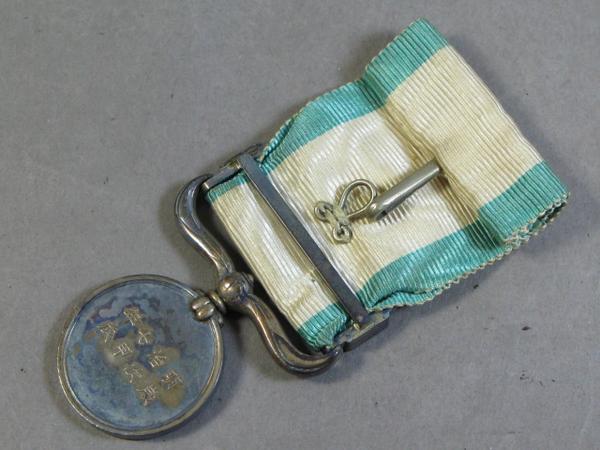
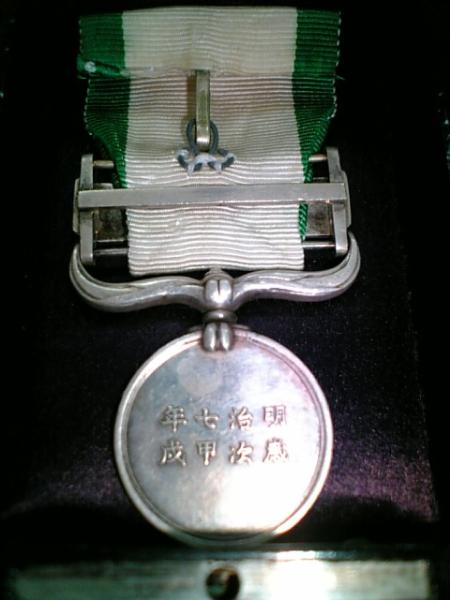 0
0 -
Only if you are right and these are time codes.
As you know I am highly skeptical about this hypothesis...
But then again, about what I am not?!

Well, I'm not totally convinced of this either. But this particular 7th class has the same type of rosette (pin mechanism) as the newer 2003+ awards - though not a small diameter, it is the larger diameter. I'm guessing these came into use in the 90's (?), but at least just prior to 2003! So, your yellow merit award is from 2000 with "VJ" - and the Sacred Treausure with "VJ" - date is unknown, but do we have circumstantial evidence to say they ight have been made around the same time?
What are your other hypotheses on what these codes could mean?
0




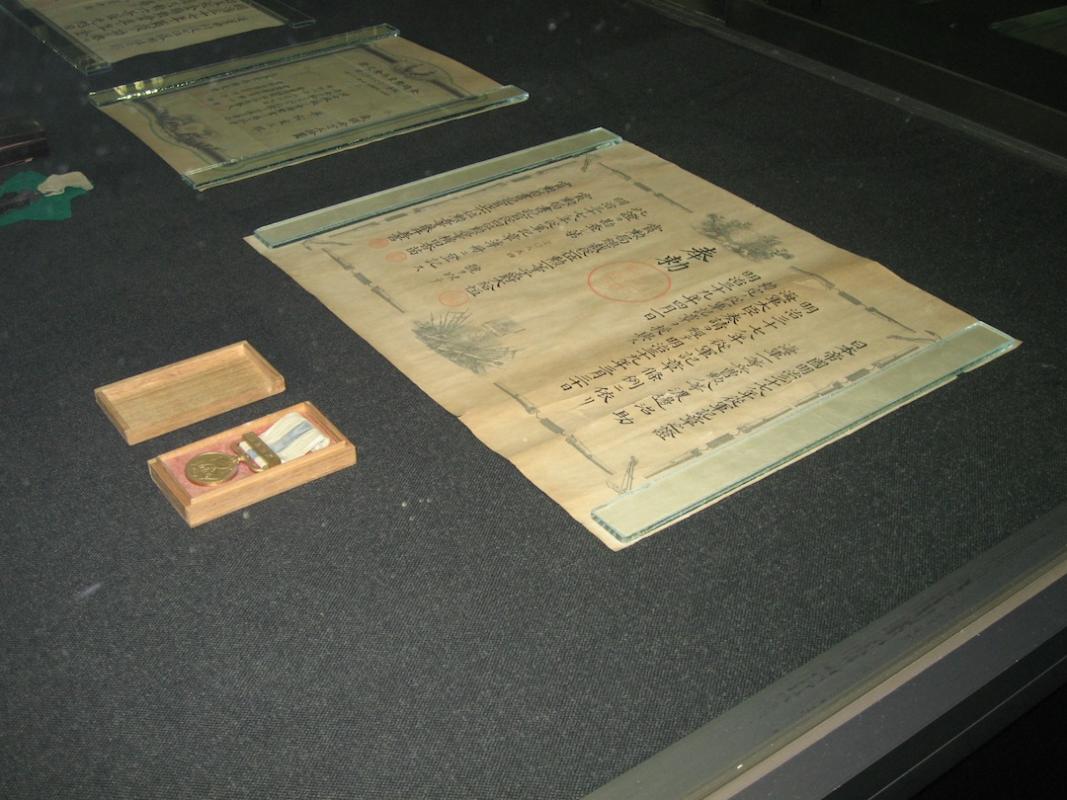
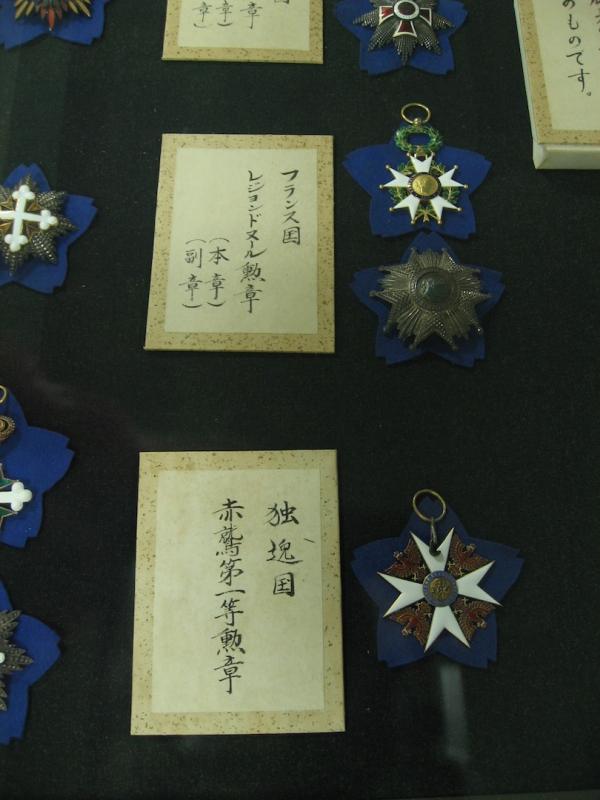
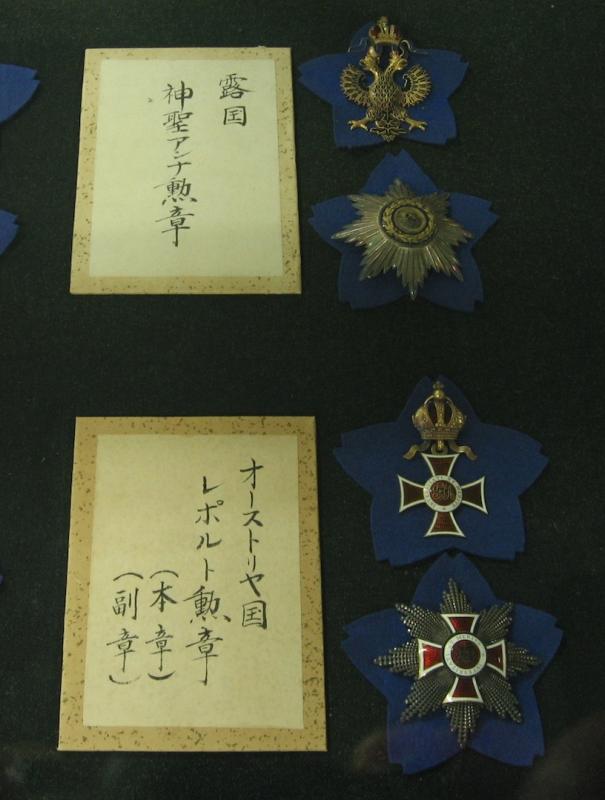
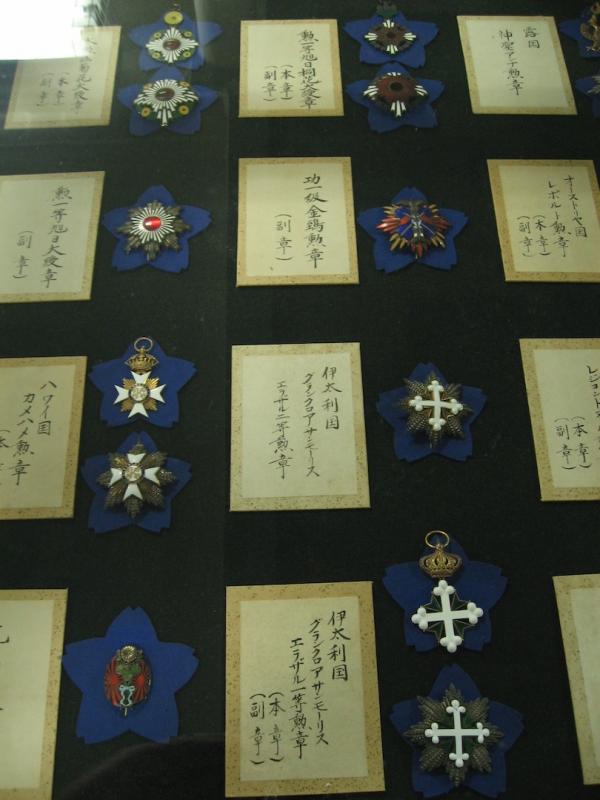
Awards of Admiral Togo and General Nogi
in Japan
Posted
Indeed!!
Verdun's post was from October 2009 though, so I don't think this could be anything of Togo's. I'm guessing he saw the same thing shown in the above photos and perhaps assumed these were Togo's, unless the collections were swapped between October 2009 and October 2010.
Nogi's Golden Kite and Scared Treasure Cordons were on display in a separate area, same deck. Pictures of those are elsewhere on the forum here.
Do let us know what you discover next year Pieter!